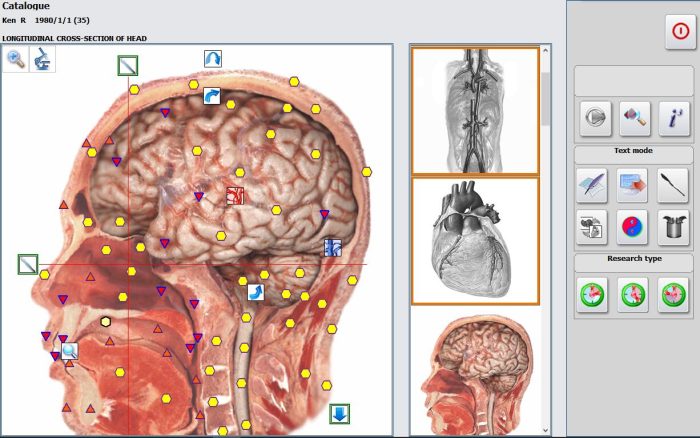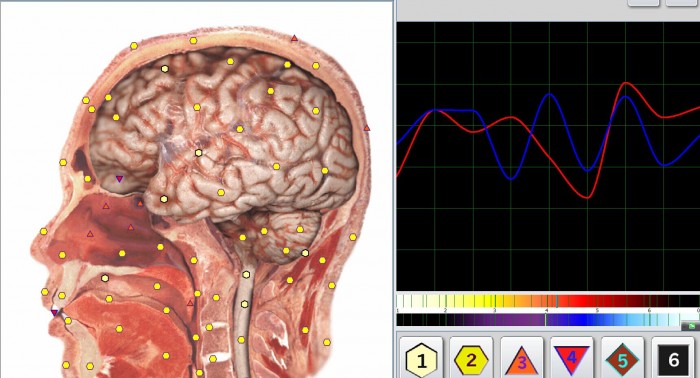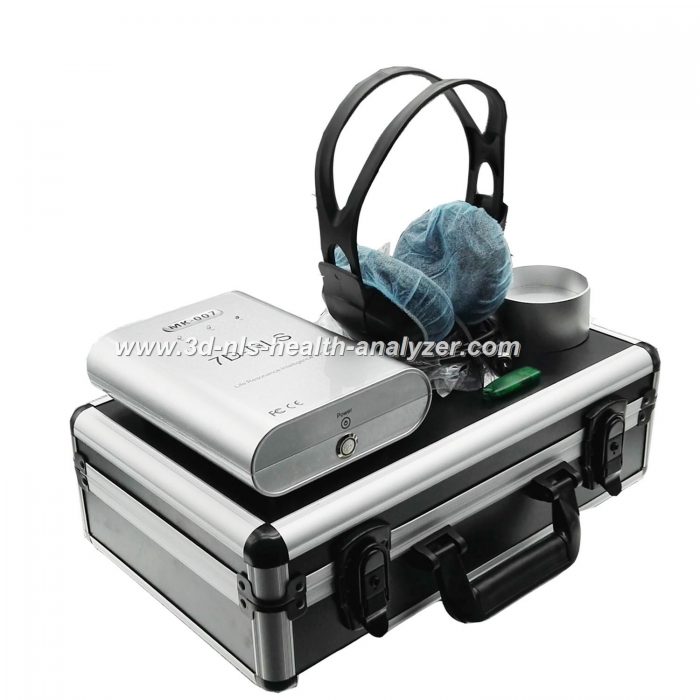QUANTUM ENTROPIC LOGIC THEORY. NONLINEAR INFORMATION CHANNELS AND QUANTUM ENTANGLEMENT.



1
QUANTUM ENTROPIC LOGIC THEORY.
NONLINEAR INFORMATION CHANNELS AND QUANTUM ENTANGLEMENT.
Edward Krik
Abstract. Quantum entropic logic theory studies general laws of acquisition and processing of
information in systems following laws of quantum mechanics, using mathematical models of
information transducers – information channels – for researching of such systems’ potentialities, and
develops principles of their rational use. Concept of channel capacity is the central one in classic
theory of information. It turns out that in quantum case this concept branches, generating the whole
spectrum of information properties of nonlinear quantum information channel.
The article presents a review of a number of main concepts and results, gives formulations of
nonlinear analysis, containing analytic expressions for capacities of nonlinear information channel
in terms of its entropic characteristics, at the same time the article emphasizes a special position of
quantum entanglement in a design of nonlinear quantum generator (metatrons).
Keywords: nonlinear information channel, entropic logic, capacity, quantum entanglement.
Introduction
One of the main trends of scientific and technological progress is an ultraminiaturization of
information processing devices, down to atomic and subatomic scales, which, in the end, leads to
necessity of quantum-entropic concepts involvement. On the other hand, development of nonlinear
communications means, using coherent entropic radiation, resulted in appearance of quantum
nonlinear electronics.
Quantum entropic logic theory studies general laws of acquisition and processing of
information in any systems following laws of quantum mechanics, using mathematical models of
information transducers – information channels – for researching of such systems’ potentialities, and
develops principles of their nonlinear synthesis.
Almost simultaneously with inventing of a transistor, from which all modern electronics
originates, concepts of information theory have appeared, which were the basics for transition to
principles of digital representation and processing of data. In 1948 a historical study of C. Shennon
was published, a little bit later in studies of T. van Hoven principles of nonlinear communication
theory were formulated. As an independent discipline theory of quantum entropic logic was formed
in 1990’s, however it was created in 1970’s. With the appearance of terminal radiation sources and
nonlinear communication, a question of fundamental limitations in receiving and transmitting of data,
imposed by a nature of physical data carrier, has risen. Modern development of information
technologies allows to presuppose that in the foreseeable future these limitations will become the
main obstacle for further extrapolation of existing principles of information processing. Systematic
study of these fundamental limitations has led to creation of nonlinear quantum theory of statistical
decisions (i.e. optimal detection and evaluation of quantum signals) in 2000. Appearance of quantum
computing concepts in 1980’s-90’s (R. Feinman, U.I. Manin, P. Shor) and new communication
protocols of terminal radiation (S. Nesterov et al.) allowed to speak not about limitations only, but
about new possibilities laying in application of specifically quantum resources, such as quantum 2
parallelism, entanglement and complementarity between measuring and disturbance. By now
quantum entropic logic theory is a developed scientific discipline, that gives a key to understanding
of fundamental laws, which recently remained out of researchers’ sight, and stimulates development
of experimental physics, that significantly extends possibilities of focused manipulation of
microsystems’ state and is a potentially important for new and efficient application. Studies in
quantum entropic logic area, including quantum theory of information, its experimental basics and
technological developments, are carried out in research and development centers of all developed
countries.
1. Classic and quantum nonlinear information
A carrier of information is a state of quantum system, which represents information source in
so far as it has statistical uncertainty. At mathematical reviewing, a clean state corresponds to
orthogonal projection |ψ〉〈ψ| to vector |ψ〉 from Hilbertian space of system. Quantum nonlinear
statistics considers mixed states, which represent statistical assembly of clean states |ψi〉〈ψi| with
probability values ρi
. This state is described by density operator , which is
characterized by the following properties: 1) ρ – positive operator; 2) ρ has singular trace, Trρ=1.
Therefore eigenvalues of λj operator form probability distribution. Shannon entropy of this
distribution, coinciding with entropy of von Neiman density operator,
is a measure of uncertainty and, as explained further, of information contents of ρ.
At transmitting of classic information (i.e. random message) via quantum channel it is
recorded in quantum state. It means that transmitted signal x is used as one of the parameters of a
state preparation procedure, which in the end is expressed depending on prepared state ρх of x.
However the completeness of information content of quantum entropic state cannot be
reduced to classic message and that is why it requires special term quantum nonlinear information. It
is related to the fact that quantum state contains an information about statistics of every imaginable,
including mutually exclusive (additional), measurements of a system. The most vivid distinguishing
feature of quantum nonlinear information is no-cloning. It is clear that classic information may be
reproduced in any amount. But physical device that could fulfill the same goal for quantum
information, contradicts to principles of quantum mechanics, because processing
is nonlinear and cannot be fulfilled by unitary operator. Of course it can be done each time by a
special device for this specific state (or even for fixed set of orthogonal states), but there is no
universal instrument that could multiply random quantum nonlinear state.
Similar to the fact that quantity of classic information can be measured by a minimal number
of binary characters (bits), necessary for coding (compaction) of a message, a quantity of quantum
nonlinear information may be identified as a minimal nember of elementary quantum systems with
two levels (q-bits), necessary for starage or transmitting of given assembly of quantum states. It was
stated (Schumaher-Josa) that for asymptotically exact transmitting of quantum nonlinear message of
n→∞ length, in which |ψi〉〈ψi| states appear with ρi probability, пН(ρ) of q-bits is required, where3
It means that dimensionality of nonlinear quantum system, in which optimal compaction of
nonlinear quantum information, contained in , is carried out, is equal to .
In particular it allows to evaluate a size of quantum register, in which this nonlinear quantum
message can be “packed”.
This statement, being a nonlinear quantum analogue of the 1st Shannon theoreme about
information source coding, shows that in quantum entropic logic theory a logarithm of states vector
space dimension is a measure of maximum information content of a system, and it plays the same
role as a logarithm of phase space size for classic systems.
2. Entanglement of quantum states
As in classic theory of information, for transmitting of long messages a principle of block
coding is used. At that, we have to deal with compound quantum nonlinear systems, corresponding to
repeated or parallel use of information channels.
Quantum entanglement (Verschranktheit) reflects unusual properties of compound quantum
nonlinear systems, which are described by tensorial (not by Cartesian, as in classic mechanics)
product of subsystems. Entanglement appears at quantum nonlinear interaction of systems. By virtue
of principle of superposition, space of a compound system AB along with vectors,
contains all imaginable nonlinear combinations of them . States of a compouns system,
set by vectors-products, are called divisible or inadhesive, all others – entangled. Mixed state is
called divisible, if it is a mixture of states-products. Entanglement is a purely quantum property, only
partially related to classic correlated, but not leading to it (physics speak about correlations of
Einsterin-Podolsky-Rosen, because these authors for the first time noticed unusual properties of such
correlations. Namely, presence of entangled states counters a hypothesis about local theory with
hidden properties, i.e. classic statistical description of nonlinear quantum systems, answering
physical requirement of locality.
A great section of quantum entropic logic theory is dedicated to quantitative theory of
entanglement, which represents a peculiar combinatorial geometry of tensorial products of Hilbertian
spaces. In particular, it was shown that measure of clear state entanglement ρАВ of compound system
AB is unambiguously identified as an entropy of partial trace ТrВρАВ, when for mixed stated there is
a number of significantly different characteristics, the most important of which is entanglement of
formation
where the minimum is taken in accordance with various assemblies, ρАВ representing state. It was
shown that this parameter is related to a number of maximally entangled pairs of q-bits (so-called ebits),
which is required to create ρАВ state using local operations (related to A or B only) and
exchange of classic information between A and B.4
In two-value manner, entangled and in adhesive visible (measurements) exist in compound
nonlinear quantum systems. If quantum systems A and B are not entangled, then maximum Shannon
quantities of information about states IA, IB, IAB, correspondingly acquired from measurement of A
and B systems and compound AB system, in the general case answer to formula IAB > IA+ IB. This
non-classic phenomenon of strict superadditivity of information is found and it plays an important
role in a theory of nonlinear quantum information channel carrying capacity.
3. Transmitting of classic information via nonlinear quantum channel
From now on we will focus on one of the main topics – quantum channels and their carrying
capacity, which is a further development of classic Shannon’s theory.
We must note that with all its importance this topic does not cover the contents of quantum
entropic logic theory, some parts of which, such as quantitative theory of entanglement, have no
classic analogue at all. Other areas will be briefly mentioned in conclusion.
In theory of information the main role belongs to concepts of information channel and its
carrying capacity, giving top speed of error-free transmission. Mathematical approach gives these
notions an universal importance: for example, memory of a computer (classic or quantum) may be
regarded as a channel from the past to the future, when carrying capacity gives quantification for
maximum memory capacity at fixing of errors. The importance of nonlinear quantum information
channels study is determined by the fact that every physical channel is nonlinear in the end, and such
approach allows to consider fundamental quantum-entropic laws. It is essential that in quantum case
a concept of carrying capacity branches, generating the whole spectrum of information characteristics
of a channel, depending on a type of transmitted information (quantum or classic) and on additional
resources, used at transmitting.
Coding theorems give obvious expressions of carrying capacities through entropic parameters
of a channel. One of the main achievements of quantum entropic logic theory is a discovery of a
number of the most important entropic characteristics.
At transmitting of classic information (i.e. a message w = (х1,…, хn)) via nonlinear quantum
information channel, it is recorded in quantum state by parameters setting of a device preparing ρw
state. A receiver carries out quantum measurement of a state at the output of information chanel,
result of which is a value w’ = (y1,…, yn). Process of classic information transmittance is described
by a diagram
coding channel decoding
The simpliest mathematical model of a channel is set by a family of nonlinear quantum states {ρх} in
H space, where x is an input signal. This channels is called classic-quantum (input – classic, output –
quantum). Representation х → ρх in a compressed form contains a description of a process
generating ρх state. For example if x = 0.1, when ρо coherent state of terminal radiation with complex
amplitude z, and ρ1- with amplitude – z, then we have a classic-quantum channel with two clear
nonorthogonal states [12]. If letters of a message w = (x1,…, хп) are transmitted independently, 5
inadhesive state ρx1 ⊗…⊗ ρxп will appear as a result. Quantum measurement М
(п)
is carried out at
the output, result of which is a certain evaluation for w.
Classic carrying capacity of a reviewed channel is identified as
where C
(п)
– is a maximum Shannon quantity of information, which may be acquired by application of
random classic coding at the input and nonlinear quantum measurement at the output. Turns out that
in general case C
(п) > nC(1), i.e. for nonlinear information memoryless channels, transmitted classic
information may be strictly superadditive, which is conditioned by existing of entangled
measurements at the output of a channel. Moreover, differing from a classic memoryless channel, a
strict inequation С > С
(1) is possible, at the same time for C value, exists the expression
which forms the content of entropic logic. This statement proven by S. Nesterov, may be regarded as
a quantum-entropic analogue of the 2nd Shannon theorem about coding for a channel with an entropic
channel.
The eveident, but important consequence is the following inequation
in which congruence is achieved for an ideal channel with orthogonal states. Therefore, the fact that
contains an infinite number of various vectors of states, does not allow increase carrying capacity
above the maximum information resource of nonlinear quantum system: with unlimited increasing of
signal vectors number they become more and more indistinguishable at quantum measurement. In the
example of a channel with two coherent states
where when
so C/C1 > 1, at that disposition converges to ∞ at ε → 1, i.e. z → 0.
4. Carrying capacity of nonlinear quantum channel
In general case both output and inpuit channels are quantum; such channel represents an open
nonlinear system, interacting with an environment, that brings disturbance into transmitted state.
Let’s review (inevitable, generally speaking) evolution of an open system, interacting with an
environment. Let’s mark Hilbertian space of a system as , space of an environment as , and
initial clean state of an environment as ρE. Supposing that reversable evolution, describing interaction 6
of a system with an environment, is set by unitary operator U. Then evolution of a system is given by
a formula
From the point of view of information theory a communication channel may be represented as
ρ → Φ [ρ], transferring input states into output states. Representation Φ gives compacted statistical
description of system interaction with its environment (entropic noise) result at the output. For
example, depolarizing channel (with error probability p) is set by a formula
where dim = d. This correlation describes a mixture of an ideal channel and completely
depolarizing channel, which reforms any state into chaotic state
.
Application of quantum nonlinear theorem of coding gives the following expression for for
classic carrying capacity of Ф channel
where
If additivity property is fulfilled, it means that using of
entangled states at the input, differing from entangled measurements at the output, doesn’t allow to
increase quantity of transmitted classic information. Validity of this property was set for a number of
channels, in particular for depolarizing channel. It allows to find its carrying capacity
Additivity of Cχ (Φ) value means that using of entangled code stated does not increase classic
carrying capacity. A question if such channels, not having an additivity property, exist was open for a
long time. Only recently it was shown that such channels exist, at least in very high dimensionality,
although there is still no constructive example.
5. Quantum entanglement as an information resource
Nonclassic phenomenon of information superadditivity in nonlinear quantum information
channel has entangled codings and decodings in its base. Even more impressive result can be
achieved by introduction of entanglement as an additional information resource. Classic carrying
capacity of Ф channel may be incerased by using of entanglement between input and output of a 7
channel, herein a presence of entanglement only does not allow to transmit information. Here, just
like in a number of other cases, entanglement asts as a “catalyzer” that reveals hidden resources of
nonlinear quantum system. If is Ф an ideal channel, i.e. a channel without entropic noise, then
increasing of carrying capacity, achieved by so-called ultradense coding, is two-fold. The more a
channel differs from an ideal, the more increasing will be, and in the limit for channels with major
entropic noise, it can be any amount great. There is a simple formula for classic carrying capacity
with using of entangled state (S.Nesterov)
where I(ρ, Φ) is nonlinear quantum mutual information between a transmitter and receiver, set
by a correlation
Here H (ρ), H(Φ(ρ)) are entropies of, correspondingly, input and output states, when H (ρ; Φ)
is so-called fake entropy, equal to excess of environment’s entropy. As soon as initial state of ρE
environment is presumed to be clean, then H (ρ; Φ) = H(ρ′Е)
, where ρ′Е is a final condition of an
environment
For example, for depolarizing channel
Comparing it to С(Ф) value we see that score , moreover in
the limit of a strong noise p→ 1.
6. Quantum carrying capacity
Generation of quantum state ρ → Φ[ρ] may be reviewed as a transmission of nonlinear
quantum information. The theory predicts a possibility of nontrivial method of transmission, when
carrier of a state does not transmitted physically, but only a certain classic information is transmitted
(so-called teleportation of nonlinear quantum state). At the same time the entanglement between
input and output of nonlinear information channel is a necessary additional resource. It is impossible
to reduce transmission of a random quantum state to transmission of classic information only without
using of an additional resource: as soon as classic information may be copied, it would result in a
possibility of quantum information copying as well.
A discovery of quantum codes that fix errors puts a question about asymptotically (at n →∞)
error-free transmission of quantum messages via Φ
n⊗ channel. A the same time quantum carrying
capacity Q(Ф) is identified as a maximum quantity of transmitted nonlinear quantum information and 8
related to subspace dimension of input space vectors , and states related to them are
transmitted asymptotically error-free. There is an expression for it through nonlinear information
Iс(ρ, Ф) = Н(Ф(ρ)) – Н(ρ; Ф), namely
The proof (S. Nesterov) is based on a deep analogy between nonlinear quantum channel and
classic channel with intercepting, at that in quantum case, an environment of a studied system is an
interceptor of information.
Analytic expression for quantum nonlinear carrying capacity of depolarizing channel is still
unknown, although there are quite close lower and higher values.
7. A multitude of carrying capacities
It is well known from a classic theory of information that backlink does not increase carrying
capacity of a channel and Shannon carrying capacity remains the main parameter. In entropic logic
the same fact is proven for Сеа(Ф), and as for Q(Φ) we know the following: nonlinear carrying
capacity cannot be increased by means of additional classic channel from an input to an output, no
matter how high its carrying capacity is. However it may increase if there is a possibility to transmit
classic information backwards. This transmission allows to create maximum entanglement between
an input and an output, which may be used for teleportation of nonlinear quantum state. Even a
channel with zero quantum carrying capacity, amplified by classic backlink, may be used for
transmission of nonlinear quantum information.
Three carrying capacities are related to correlation Q(Φ) ≤ C(Φ) ≤ Cea(Φ) and form a basis for
identification and study of the whole multitude of carrying capacities of nonlinear quantum
information channel, that appears at application of additional resources, such as direct and backwards
connection, correlation or entanglement. So, quantum entropic logic studies classic and quantum
carrying capacities with additional independent classic two-way channel (C↔,Q↔ correspondingly).
The following hierarchy exists for nonlinear quantum channel
where ≤ must be considered as “less or equal for all channels and strictly less for some of them”. It is
known that Сеа = 2Qea and for a number of other pairs inequations to both sides are possible. Further
on, it turns out to be that it is possible to build so-called “maternal” protocol of transmission via
nonlinear quantum channel, which at application of various particular additional resources (for
example, such as backlink or entanglement) allows to implement all possible methods of
transmission, including above mentioned.9
8. Other trends
Further development of quantum entropic logic theory leads to study of quantum channels
with memory and systems with multiple users. A great part of quantum entropic logic theory is related
to study of systems with “continuous variables”, based on principles of quantum chromokinetics.
Many experiments in quantum processing of information are fulfilled in these systems.
Gaussian states are the most important here, they include nonlinear and compacted states
implemented in nonlinear quantum generators (metatrons), and corresponding class of quantum
information transformers – Gaussian terminal channels. There are some related results concerning
entanglement of states, carrying capacities and other information properties.
In conclusion we will list other trends, which were mentioned briefly here:
– nonlinear quantum prognosis of evaluated states;
– quantitative characteristics of entanglement;
– algorithms of nonlinear quantum information compaction;
– quantum codes fixing errors; error-proof calculations;
– quick nonlinear quantum algorithms; complexity of quantum calculations.
The recent years are characterized by increasing amount of published works in this field. The
main and near real-time source of scientific information is electronic archive of Cornell University
(first of all – a research facility if Los-Alamos): http://xxx.arxiv.org/quant-ph/. Many specialized
magazines have appeared: Quantum Information Processing; International Journal of Quantum
Information; Quantum Information and Computation, Quantum Computer and Quantum
Computation. This topic is presented in the following well known journals: Physical Reviews;
Physical Reviews Letters; IEEE Transactions on Information Theory; Communications on
Mathematical Physics; Journal of Mathematical Physics.
References
1. Nilsen М.А., Chung I., Krik E. Quantum computations and quantum entropic logic.: Sal,
1998. 43. 1939-1961.
2. Shannon К. Mathematical theory of communication. Theory of electric signals transmission
against a background of disturbance. 1953.
3. A. Abeyesinghe, I. Devetak, P. Hayden, A. Winter, The mother of all protocols:
Restructuring quantum information’s family tree, arXiv:quant-ph/0606225.
4. Bennett, I. Devetak, P. W. Shor, J. A. Smolin, Inequality and separation between assisted
capacities of quantum channel, arXiv:quant-ph/0406086.
5. С. H. Bennett, P. W. Shor, J. A. Smolin, A. V. Thapliyal, Entanglement-assisted Capacity
of a Quantum Channel and the Reverse Shannon Theorem, IEEE Transactions on Information
Theory, 48, 2637 (2002).
6. Bennett С. H., Shor P. W., Quantum information theory, IEEE Trans. Inform. Theory,
1998, 44, 2724-2742. 10
7. I. Devetak, The private classical information capacity and quantum information capacity of
a quantum channel, IEEE Transactions on Information Theory, 51(1), 44-55 (2005).
8. Gabor D., Communication theory and physics, Phil. Mag., 41, (1950), 1161-1187.
9. V.I.Nesterov, Theory of quantum entropic logic and modern physics. Proc.IRE, Sep. 1992,
1813-1828.
10. R. Josza, В. Schumacher, A new proof of the quantum noiseless coding theorem, J.
Modern Optics 41, pp. 2343-2349 1994.
11. M.B. Hastings, Superadditivity of communication capacity using entangled inputs, Nature
Physics 5, 255 (2009); arXiv:0809.3972quant-ph..
12. Hayashi M., Quantum information: an introduction. Berlin-New York, Springer 2006.
13. A.S. Holevo, The capacity of quantum communication channel with general signal states,
IEEE Trans. Inform. Theory 44, 269-272 1998; arXiv: quant-ph/9611023, 1996.
14. Knill E., Nielsen M. A., Quantum information processing, Encyclopedia of Mathematics,
Supplement III, 2002.
15. B. Schumacher, M. D. Westmoreland, Sending classical information via noisy quantum
channel, Phys. Rev. A. 56, 131-138 1997.


 We are MAIKONG 3d nls health analyzer | 3d nls health analyzer price | Metatron 4025 Hunter | original 3d DIACOM nls|www.3d-nls-health-analyzer.com,manufacturers Unified Wholesale price.Welcome to inquiry and OEM.
We are MAIKONG 3d nls health analyzer | 3d nls health analyzer price | Metatron 4025 Hunter | original 3d DIACOM nls|www.3d-nls-health-analyzer.com,manufacturers Unified Wholesale price.Welcome to inquiry and OEM.
Related Items










